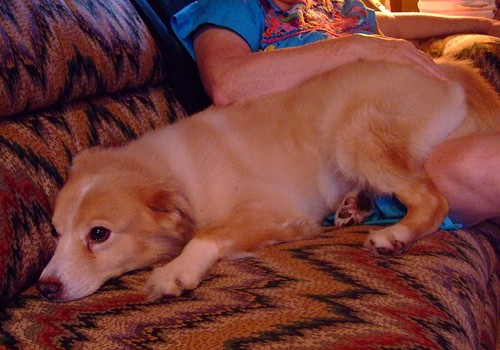
Fear Of Noise
Dogs have keen hearing. They tend to be especially sensitive to the sounds of thunder, fireworks, and gunshots. Dogs that were originally bred for work in herding animals, such as Australian and German shepherds, border collies, and Shetland sheepdogs are especially prone to show signs of extreme anxiety when they hear sudden, loud noises. Just about any breed will whine, salivate, or make frantic attempts to escape if the noise is loud enough. Your first priority is to make sure your pet does not run away. Even though the experience is difficult, life on the street is harder. You can train your pet to deal with loud noises by playing sounds of thunder or fireworks at low volume in a safe setting, preferably with you in physical contact with your pet. Keep the volume low enough that the sound does not cause anxiety. A day or two later, repeat the session, petting your animal, with the volume just a little higher, and so on, until your pet is less anxious about these common sounds. This procedure also works for easing fear of high pitches, traffic sounds, and wind.
- Important notification about information and brand names used in this slideshow!
- Photo courtesy of jypsygen by Flickr : www.flickr.com/photos/jypsygen/2698395881/
- Virtual Pet Behaviorist, ASPCA, Fear of Noises, http://www.aspca.org/pet-care/virtual-pet-behaviorist/dog-behavior/fear-noises, Accessed 21 August 2013.

Severe Separation Anxiety
One of the most common complaints of people who own pets (or people who are owned by pets, depending on your point of view) is unexplained episodes of urinating, defecating, scratching, biting, barking, meowing, howling, and attempts to escape the house or apartment. Often these episodes are caused by the pet's fear of abandoment, causing severe separation anxiety. Most animal experts recommend desensistization, reassuring your pet you will come back in small steps. If there are signals that you are about to leave, such as jingling your keys or manipulating the thermostat, expose your pet to your doing these things without leaving. Or leave your home for just a few minutes and come right back, to show your pet that you aren't going to be gone forever. Taking your dog for a ride is also fun for the dog and for the owner, as it relieves separation anxiety in general.
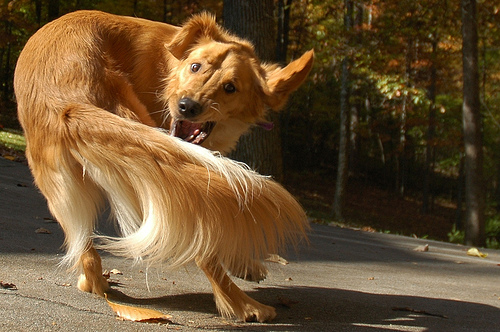
Repetitive Behaviors
Does your dog seem to have obsessive compulsive disorder (OCD)? Some dogs will spend hours performing one behavior over and over so long that it interferes with the dog's normal life. This behavior can be spinning, barking, chasing a shadow, chasing their tail, or fixation on a toy, causing the dog to become exhausted. Usually, canine OCD is treated by relieving the condition that causes it. Dogs confined to small spaces usually need larger spaces. Dogs that have been abused by previous owners need lots of love and attention. Dogs that have recently lost their companions need to make new doggie friends. Provide plenty of activities for your dog--at least 30 minutes of aerobic exercise a day is good for both dog and human.
- Important notification about information and brand names used in this slideshow!
- Photo courtesy of Tim Mowrer by Flickr : www.flickr.com/photos/mekin/281791343/
- Virtual Behaviorist, ASPCA. Compulsive Behavior in Dogs, http://www.aspca.org/pet-care/virtual-pet-behaviorist/dog-behavior/compulsive-behavior-dogs, Accessed 21 August 2013.
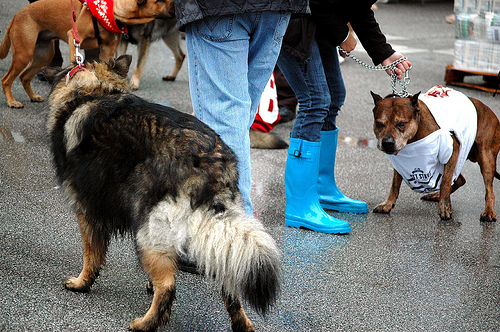
Unusual Aggression Toward Other Animals
When Fido feigns fearsomeness around Fluffy without apparent provocation, the pet cat can usually escape to a higher perch. When a dog becomes aggressive around people, especially around people, intervention becomes urgent. Sometimes there is an easy fix for predictable aggression in a dog. A dog who guards an empty food bowl, for example, needs a consistent supply of food. A dog who is possessive of a toy simply needs access to that toy. More serious cases, however, usually require professional intervention by a vet or pet trainer. It is preferable to prevent dog behavior problems by choosing a dog as a puppy from a litter, looking for sociability from a very early age.
- Important notification about information and brand names used in this slideshow!
- Photo courtesy of Steve Baker by Flickr : www.flickr.com/photos/littlebiglens/7147139885/
- ASPCA Pet Care, Choosing a Puppy from a Litter, http://www.aspca.org/pet-care/virtual-pet-behaviorist/dog-behavior/choosing-puppy-litter, Accessed 21 August 2013.

Unusual Aggression Against People
Dogs that are unusually aggressive toward people can expose their owners to insurance and legal liabilities. A history of insurance claims for dog bites will greatly increase the cost of insuring a house or apartment, and people whose dogs attack or even kill humans can be brought up charges for assualt or even manslaughter. If an aggressive dog displays predictable behavior, it may be possible to isolate the dog so that it does not cause harm. If an aggressive dog's dangerous bheaviors are hard to predict, public health officials will usually seize the dog and euthanize it. If you love your dog, you must make sure it does not attack people.
- Important notification about information and brand names used in this slideshow!
- Photo courtesy of Omer Unlu by Flickr : www.flickr.com/photos/55293400@N07/5726700785/
- Virtual Pet Behaviorist, ASPCA, http://www.aspca.org/pet-care/virtual-pet-behaviorist/dog-behavior/aggression-dogs, Accessed 21 August 2013.

Hyperactivity In Dogs
A surprisingly common cause of hyperactivity in dogs is methylxanthine toxocosis, also known as chocolate poisoning. The same chemicals in chocolate that make humans say "yum" make dogs say "Woof!" but not in a happy way. Dogs that swallow chocolate develop not just hyperactive behavior but also rapid heartbreat, shallow breathing, vomiting, and diarrhea. Dogs can also display similar, but milder, symptoms when exposed to caffeine. Coffee and chocolate just aren't safe for our canine companions. When dogs haven't been eating table scraps or other "people food" but become hyperactive, the problem may be simple boredom, confinement to too small a space for too long, not enough exercise, not enough interaction with humans or other dogs. If you happen to use cocoa bean mulch in your outdoor landscaping, make sure to keep dogs away from it. The lanscape mulch can also cause symptoms of toxicity.
- Important notification about information and brand names used in this slideshow!
- Photo courtesy of Jim by Flickr : www.flickr.com/photos/86886338@N00/2557375304/
- ASPA, Cocoa Bean Mulch as a Source of Toxicosis in Dogs, http://www.aspcapro.org/sites/pro/files/cocoa-mulch.pdf, Accessed 21 August 2013.
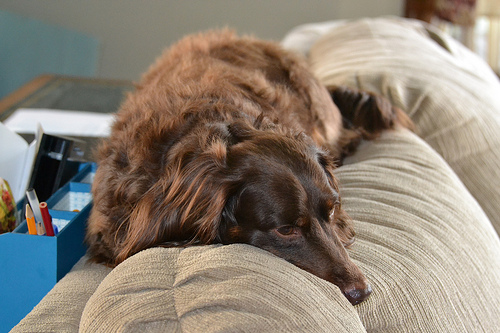
General Anxiety
Is your dog "nervous as a cat?" For that matter, is your cat an example of that old expression? Generalized anxiety in either dogs or cats sometimes isn't what it seems. Particularly when "anxiety" takes the form of the pet's scratching, biting, licking, or chewing its own coat, the actual problem may be fleas or food allergies. Get rid of fleas with a gentle pet shampoo and regular laundering of upholestery on which the pet sleeps. Avoid pet foods that contain horse meat, a major source of allergens, and if possible, avoid pet foods that are laced with artificial flavors (such as bacon) or colors (to mimic the colors of meat).
- Important notification about information and brand names used in this slideshow!
- Photo courtesy of Tony Alter by Flickr : www.flickr.com/photos/78428166@N00/5844806115/
- Rister, R. Healing without Medication (Basic Health Publications, 2003).
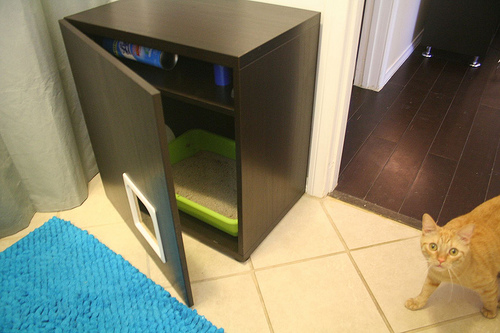
Problems With The Litter Box
One of the most common problems with cats is missing the litter box. The solution is usually to provide another, second litter box, at least one litter box per cat and an extra. The litter box needs to be easy for the cat to enter; high sides are a common problem for older cats. Hoods or liners that make the cat uncomfortable can also discourage use. Litter boxes need to be cleaned regularly. Allowing feces and urine-soaked kitty litter to accumulate can cause cats to use cleaner locations to relieve themselves, such as your carpet. It's also important to make sure kitty litter isn't too deep. For most cats, 1 to 2 inches (2-5 cm) is enough.
- Important notification about information and brand names used in this slideshow!
- Photo courtesy of Claire Armstrong by Flickr : www.flickr.com/photos/armst/3669130723/
- Virtual Pet Behaviorist, ASPCA, Litter Box Problems, http://www.aspca.org/pet-care/virtual-pet-behaviorist/cat-behavior/litter-box-problems, 21 August 2013.
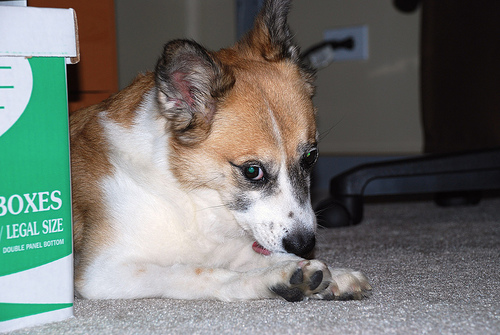
Injuries
Pets, like people, can be accident prone. And like people, pets suffer more frequent physical injuries as they age and lose muscle strength, agility, hearing, and eyesight. It helps to keep an older pet's home free of clutter and unusual, confusing scents, making navigation easier. In cats, contrary to what you may have heard, the most frequent injuries are caused by falls. Falling just one or two stories doesn't give a cat enough time to position its body so that injuries are minimal. It is important to keep windows screened so that cats don't lose balance and fall out. Cats can slip through child-proof window guards. These don't provide adequate protection.
- Important notification about information and brand names used in this slideshow!
- Photo courtesy of djblock99 by Flickr : www.flickr.com/photos/djblock99/2182452840/
- Virtual Pet Behaviorist, ASPCA, High-Rise Syndrome, http://www.aspca.org/pet-care/cat-care/high-rise-syndrome, 21 August 2013.
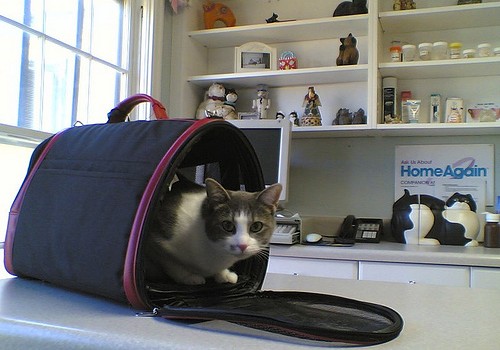
Vet Visits
Pets notriously don't like to visit vets. People don't like to take their pets to the vet, either. The experience for pet and people, however, can be made easier by following a few simple rules. First of all, don't avoid regular checkups. You'll have fewer problems taking your pet to the vet if preventable problems are taken care of before they start. Secondly, always take your pet's favorite treats and toy along for a trip to the vet. Keep your animal distracted during the physical exam. Finally, prep your pet for the vet visit by giving it the same experiences it will have at the vet's office. Let it lie on a table. Shine a light in its face and give it a treat. Manipulate its toes and give it a treat. Then be sure to take treats with you when you go to the vet's office.
- Important notification about information and brand names used in this slideshow!
- Photo courtesy of joediev by Flickr : www.flickr.com/photos/joediev/2199258924/
- ASPCA, Virtual Pet Behaviorist, Fear of the Vet's Office, http://www.aspca.org/pet-care/virtual-pet-behaviorist/dog-behavior/fear-veterinary-clinic, Accessed 21 August 2013.



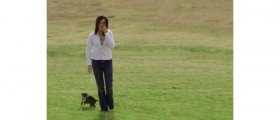

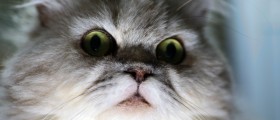

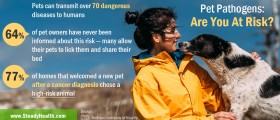

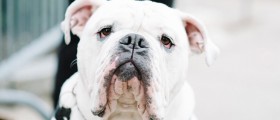




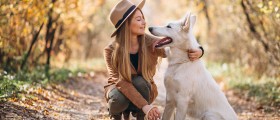
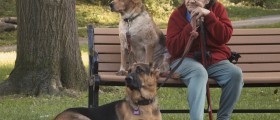
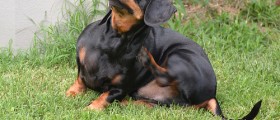
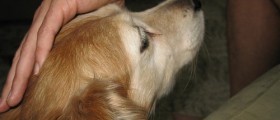
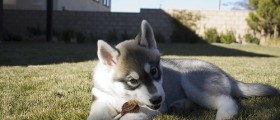




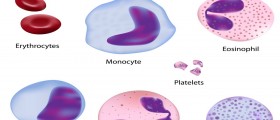
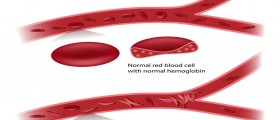
Your thoughts on this
Loading...